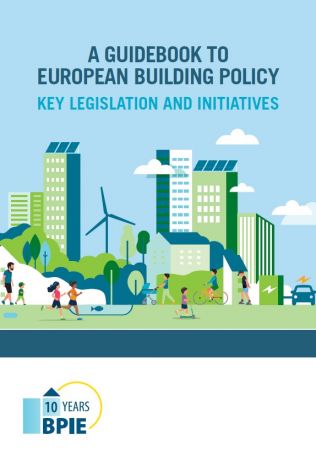WOBO thanks Judy Zakreski , Vice President Global Services, ICC for providing the link to this publication.

Buildings are responsible for approximately 40 percent of the energy consumption and 36 percent of the carbon dioxide emissions of the European Union (EU). On average, Europeans spend 90 percent of their time indoors, and the quality of the indoor environment affects health and wellbeing. Two-thirds (65 percent) of Europe’s building stock was built before 1980: about 97 percent of the EU’s buildings must be upgraded to achieve the 2050 decarbonization goal, but only around one percent are renovated each year.
Buildings have the potential to drive flexibility in the energy system, through energy production, control, storage and demand response, as well as green charging stations for electric vehicles; but this can only happen if a systemic upgrade of the building stock is achieved. A highly efficient, technically equipped and smarter building stock could be the cornerstone of a decarbonized energy system.
A new publication — A Guidebook to European Building Policy: Key Legislation and Initiatives — issued by the Buildings Performance Institute Europe provides an overview of the energy efficiency measures adopted at the European level related to buildings and construction products. While each country in Europe has its own national building regulations, there are certain requirements — such as the European Construction Product Regulations (that contain mandatory standards for building materials) — which must be adopted by national bodies in all EU member states. Certain energy efficiency requirements are also legislated at the EU level, and the new publication focuses on these regulations that impact buildings and construction (specifically related to the decarbonization of the building stock):
- The Clean Energy Package for all Europeans – a comprehensive set of legislation that defines European climate and energy policy beyond 2020. It includes the updated Energy Performance of Buildings Directive (EPBD), the Energy Efficiency Directive (EED), and the Renewable Energy Directive (RED), which cover the main issues regarding building policies on a European level.
- A new Circular Economy Action Plan (CEAP) was adopted in March 2020. It includes measures that will help stimulate Europe’s transition towards a circular economy and encompasses the entire life cycle of products and key value chains, including construction and buildings.
- The EU Energy Product Policy, including the Energy Labelling Directive that aims to provide a clear and simple indication of the energy efficiency of products at the point of purchase, and the Eco-Design Directive that improves the environmental performance of products by setting mandatory energy efficiency standards and eliminating the least strongly performing products from the market.
The EU has committed to decarbonizing its building stock by 2050 and these measures were instituted to help each country work to achieve that goal through its national energy and climate plans. This often includes requirements to update national building codes to increase the share of renewable energy solutions in buildings, including through renovations to the existing building stock.
The European legislation covers and connects a range of topics to support high performance and decarbonization of the building stock. These include the calculation of the energy performance of buildings, the implementation of energy performance certificates (via the EPBD), and measuring and metering of energy consumption in multi-unit buildings and building automation. The rules affect existing building stock as well as new buildings.

